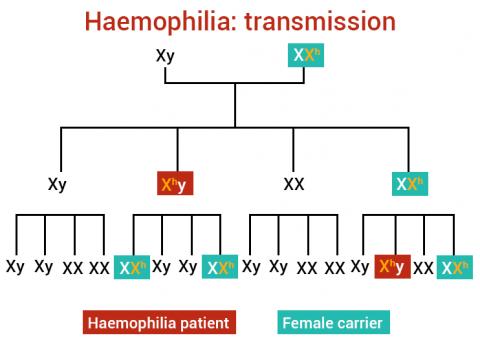Tests & Clinical Applications, Hemophilia B, What is the origin of the disease?
Genetic aspects
The gene for factor IX is located on the long arm of chromosome X. A single allele is present in males compared with two in females.
Carriers are generally non-symptomatic although some may have reduced plasma activity of factor IX (below 50%, i.e. 50 U/dL).

Numerous mutations responsible for hemophilia B have been described and screening involving molecular biology techniques is performed to characterise patients, identify carriers and make prenatal diagnosis. However, these genetic studies are only performed at specialized centres.
In around one third of patients the disease arises following the onset of a de novo mutation in a family hitherto unaffected by the disease.
Physiological aspects
Factor IX is synthesised by the liver.
Its synthesis requires the presence of vitamin K. In the absence of vitamin K or in patients undergoing treatment with vitamin K antagonists, factor IX is produced, like other vitamin K-dependent factors (II, VII and X) in the form of acarboxyprotein.
This factor is known as PIVKA (protein induced by vitamin K absence or antagonist).
Administration of vitamin K in very quickly corrects this acquired deficiency through carboxylation of PIVKA.
Factor IX circulates in plasma in the free form.
The severity of hemorrhagic signs is closely correlated with the degree of deficiency of the coagulation factor in plasma. The severity of the disease is generally identical from one member to another within a given family and does not vary over time.
